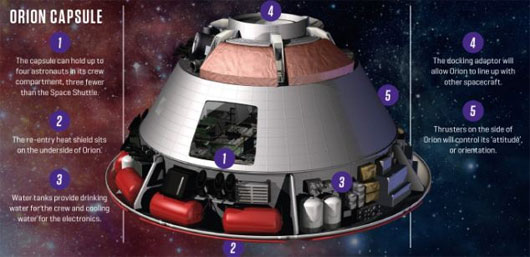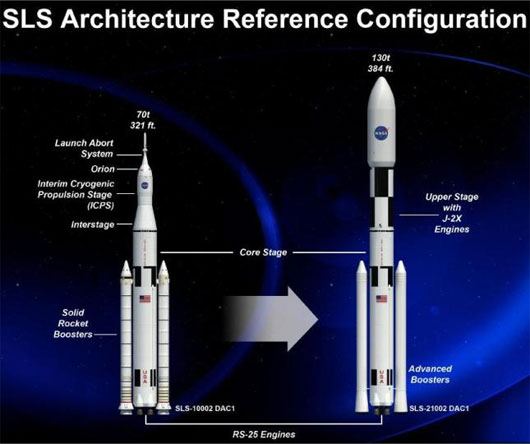NASA revealed technology to send people to Mars
For the first time in a generation, the US Aerospace Agency (NASA) has begun to build a new astronaut-carrying spacecraft, which is expected to bring people further into space, including explore Mars.
Scientists have never underestimated the challenge of a trip to Mars. Compared to it, the success of Apollo and the crew landing on the Moon in the 1960s and 1970s was likened to "children's play".
Instead of just a few weeks in space, the journey from Earth to Mars and vice versa will take several years. This greatly increases difficulties. If something goes wrong, there is no shortcut to help the crew return home. Problems both technical and human, including illness, disability, . will have to be overcome during the spacecraft's flight.

NASA hopes the Orion spacecraft will help people explore further in the universe, including Mars.(Photo: Daily Mail)
Therefore, having appendicitis during the trip can also become a death sentence. That's not to mention the astronaut's psychological stresses when living and working in a limited space, being isolated from the home planet for many years.
However, NASA and other space agencies around the world are giving themselves the task of overcoming this challenge. The best evidence for this effort by NASA is the creation of the Orion spacecraft and the Space Launch System (SLS) , the official name of the most powerful rocket that has been developed to date.
Orion is currently in the process of finalizing the assembly and is expected to be launched in space for the first time in September this year, thanks to the Delta IV rocket. According to NASA's disclosure, Orion designed the simulation of Apollo spacecraft, but the main difference was the heat shield.
To separate from Earth orbit requires greater speed than simply bringing the spacecraft to orbit. When returning, the spacecraft will re-infiltrate our atmosphere with that extra velocity, which means that the heat shield must work very hard.
Simple shuttle insulation panels will not work, so NASA is developing a new, stronger shield for Orion. The first shield was shipped to the Kennedy Space Center in December 2013 and is currently attached to Orion. It is a 5 meter wide structure, made up of a titanium frame and carbon fiber shell, which helps lift 320,000 shields arranged in honeycomb form.

The simulation of the structure of NASA's SLS boosters, the strongest ever developed by world scientists.(Photo: Science Uncovered)
The shields were coated with a special substance called Avcoat . This substance will flake off during the spacecraft's re-entry into the Earth's atmosphere, helping to remove heat energy and slow down the spacecraft. The titanium frame will give the spacecraft the power to withstand the final landing in the Pacific.
If the test results in September go smoothly, the Orion ship will fly into space for the second time in 2017. This trip will reach the Moon and return, but there will be no astronauts on board and NASA. There are also no plans for the Moon lander. However, this trip is very important, because it will test the ability of SLS boosters.
If nothing goes wrong, the astronauts will have the opportunity to drive the Orion, brought into space by SLS boosters in 2021. The first goal will also be the Moon orbit and then the destination Other, maybe Mars.
- NASA announced plans to send people to Mars
- Want to send your name to Mars? NASA will help!
- Elon Musk revealed the image of a spacecraft that can carry 100 people on Mars
- Please register with NASA to get your name posted on Mars now!
- Use 3D technology based on Mars
- NASA revealed the mission of the next Mars probe
- 2037: NASA will send people to Mars
- Planting trees on Mars
- NASA will bring people up to
- NASA recruited astronauts for Mars exploration campaign
- NASA's Maven spacecraft approached Mars
- NASA tested the spacecraft to send people to Mars
 Van Allen's belt and evidence that the Apollo 11 mission to the Moon was myth
Van Allen's belt and evidence that the Apollo 11 mission to the Moon was myth The levels of civilization in the universe (Kardashev scale)
The levels of civilization in the universe (Kardashev scale) Today Mars, the sun and the Earth are aligned
Today Mars, the sun and the Earth are aligned The Amazon owner announced a secret plan to build a space base for thousands of people
The Amazon owner announced a secret plan to build a space base for thousands of people